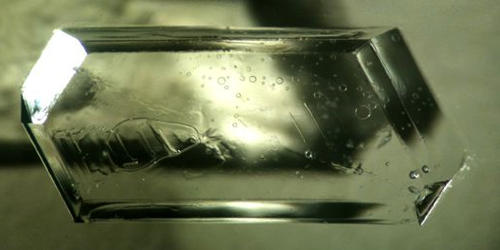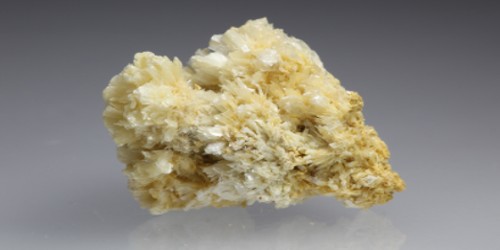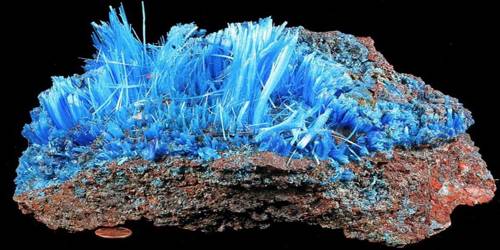Meridianiite is the mineral consisting of magnesium sulfate undecahydrate, MgSO4•11H2O. These minerals can form by precipitation from a saturated solution or through evaporation of a brine solution at or below the surface. It is colorless transparent crystalline salt that precipitates from solutions saturated in Mg2+ and SO42− ions at temperatures less than 2 ˚C. The synthetic compound was formerly known as Fritzsche’s salt.
Meridianiite is a naturally occurring mineral species found on Earth in a variety of environments including sea ice, crusts, and efflorescences in coal/metal mines, cave systems, oxidized zones of sulfide deposits, salt lakes/playas and Antarctic ice-cores. It is commonly associated with other evaporite minerals such as epsomite, mirabilite, halides, and other sodium-magnesium-sulfates. There is some evidence that it was once present on the surface of Mars, and may occur in several bodies of the Solar system. As of 2012, it was the only undecahydrate sukfate known.
General Information
- Category: Sulfate minerals
- Formula: (repeating unit) Magnesium sulfate 11 hydrates MgSO4•11H2O
- Crystal system: Triclinic
- Crystal class: Pinacoidal (1) (same H-M symbol)
- Color: Colorless or white

Properties
Meridianiite produces needle-shaped to broad flat crystals that are clear to colorless-white. It decomposes incongruently above 2 °C to produce epsomite (MgSO4•7H2O) and water. Meridaniite and water have a eutectic point at −3.9°C and 17.3% (mass) of MgSO4. It can incorporate large proportions of other divalent cations as solid solution, without changes to its structure.
- Formula mass: 318.55 g/mol
- Crystal habit: Needle-shaped to broad flat crystals
- Tenacity: Brittle
- Luster: Vitreous – dull
- Streak: White
- Diaphaneity: Transparent
- Specific gravity: 1.512
Occurrence
Meridianiite has been found to occur on the surface of the ice layer formed in winter over the ponds known as Basque Lakes, in Canada. The water in those ponds has a high concentration of magnesium sulfate and other salts.
Meridianiite has also been detected in sea-ice collected in winter from the saline Lake Saroma in Japan, as well as in ice cores from Dome Fuji station, Antarctica, near the summit of the east Dronning Maud Land plateau.
Information Source:
















